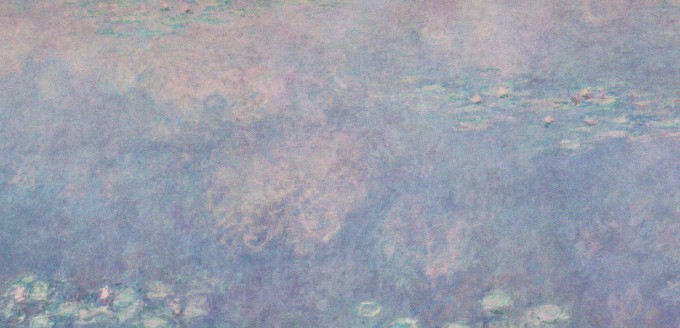“The weight of a petal has changed the face of the world and made it ours.”
– Loren Eiseley, How Flowers Changed the World
Roses are red. Violets are blue. Flowers,
–like poetry, romance, art—
cannot change the world. They are the epitome of non-, no, anti-utilitarianism:
Pretty, serving pretty much no purpose, “dainty, trivial, dispensable,” tied with a silk ribbon, wrapped in clean wax paper, carried delicately on trains, buses, bicycles, to say something, anything, mean anything, “which skates close to meaning nothing,” figure, briefly, on tables and lapels and flash, once a year, in magnificent, unreal reds on the fourteenth of February.
Roses are red against brick. Violets, blue against grindstone sky and sidewalk grey. For a day, a whiff of another world, a glimpse, in passing: a world in love. Then, it is the fifteenth.
The world does not change. Only hardens; grindstone. Goes to work, and war, day after day after week and month and year, against being poor, sick, afraid, old, useless, itself, others, death and nature,
and love tires, and violets, roses—like romance, art, poems—wilt. Petals dry, break, can’t harden. Flowers cannot change the world, but perhaps, that is not their purpose.
A whiff, a glimpse of a world in love, in passing, in the street, on a train, a sidewalk, bus:
Once upon two hundred million years, flowers, or angiosperms, burst into colour, sheltering seeds, embryonic pants, providing their nutrition, ensuring their propagation by appealing to animals; triggering, fostering the evolution of other species; birds, mammals … a world come alive:
“Without the gift of flowers and the infinite diversity of their fruits, man and bird, if they had continued to exist at all, would be today unrecognizable.”
The purpose of flowers is to be red, blue, soft, and remind the world of a time when it too, was breakable.
“What makes you know you are a body? Hunger? Swallowing? Shitting? The dumb pain of a stubbed toe or a bit tongue? Lungs swelling and emptying in breath? Legs moving as you walk or run, skeleton holding up the weight of you? Feeling the boundaries of your body against another body in sex and then feeling them dissolve?”
What makes a world fall in love again? Remember breath and colour and fields of roses and poppies and violets and daisies and tall and endless “sunflower forests” and…
Once upon two world wars ago, in 1914, when his own government had fled Paris for Bordeaux, Claude Monet, seventy-three, refused to leave Giverny: “I shall die among my canvases, in front of my life’s work.”
He began painting, half blind, from heart, from memory,
quietly, in loud, big, and vibrant colours,
louder, bigger, more vibrantly, heartbreakingly colourfully,
than the grinding, roaring gunfire he could hear, less than fifty kilometers away,
his final life work: eight large-scale, hall-size canvases of waterlilies, a memorial.
A gift to the millions killed, on all fronts, during the war, and a reminder to the millions left facing the world, of another:
of flowers,
a landscape of light and air and water, no horizon line; infinity,
and colour,
a world beyond time and space, magnificent and real, where love softly, stubbornly, refuses to wilt.
